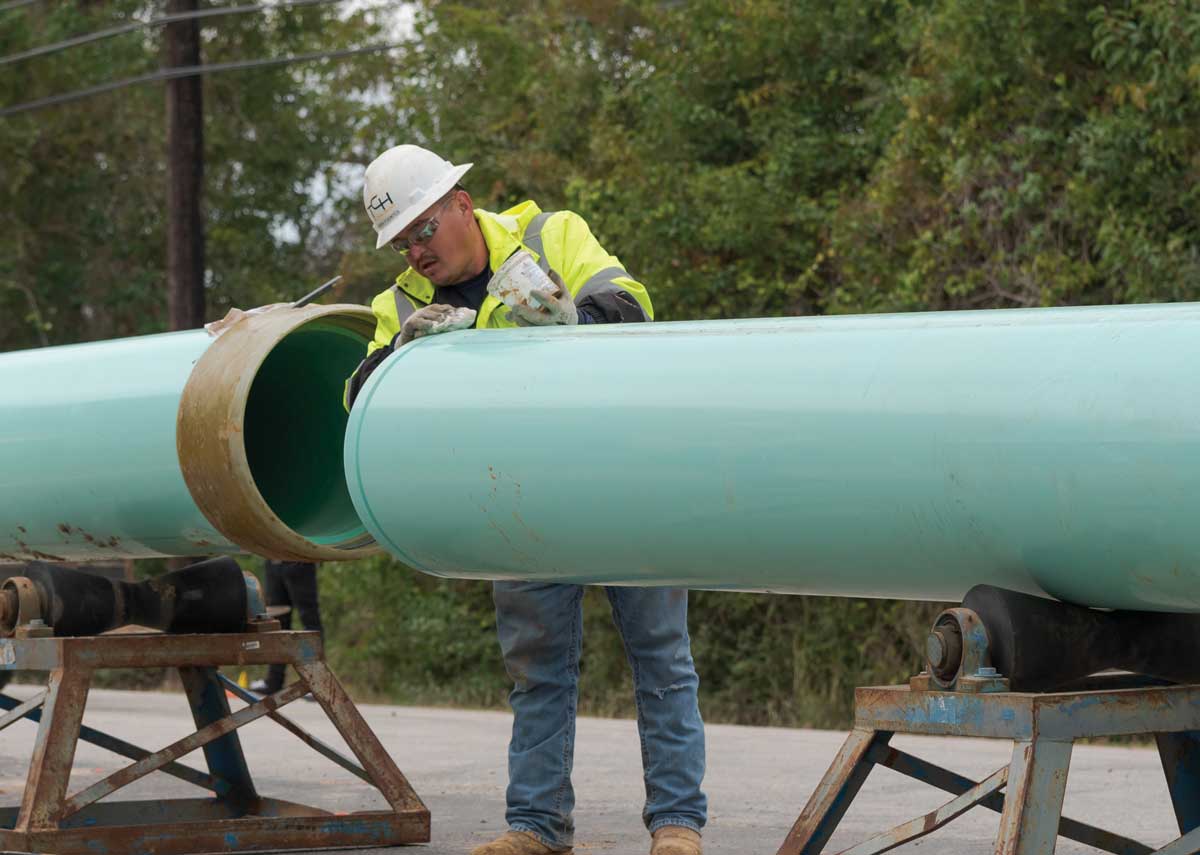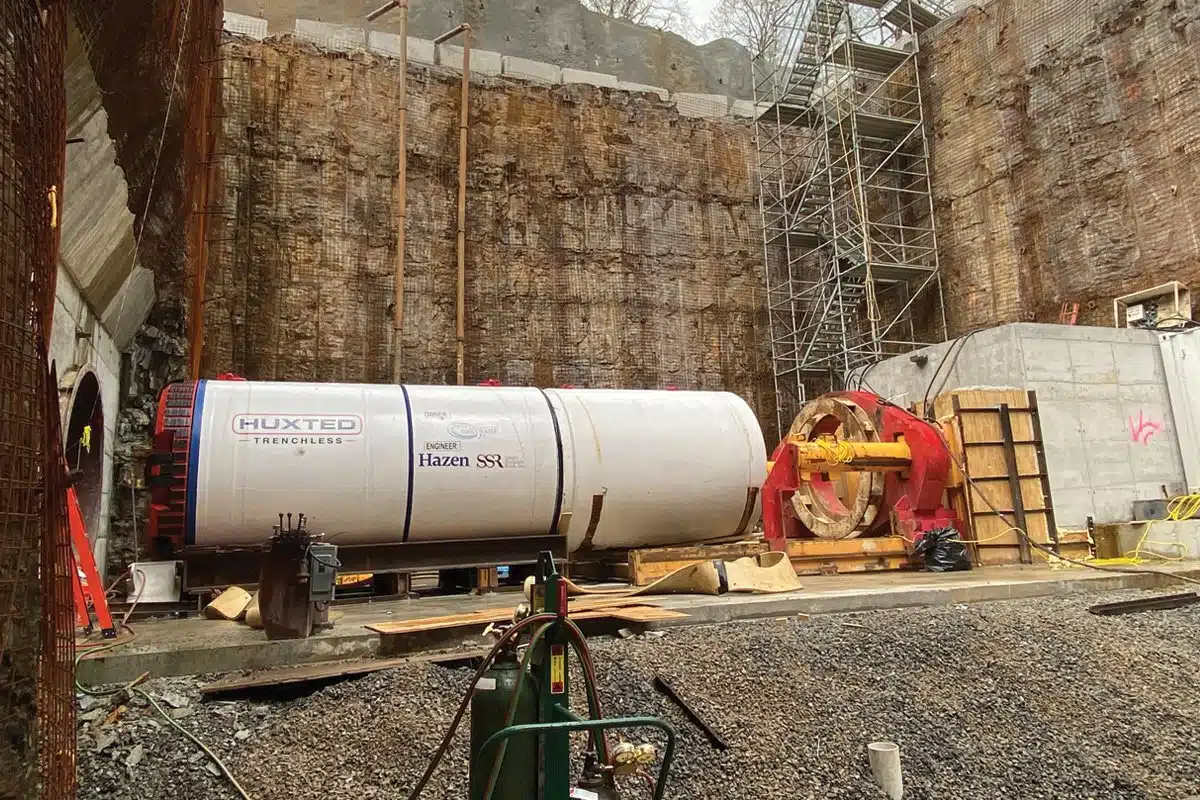
Segmental PVC Pipe Supports Solution for More Resilient Wastewater System Reconstruction After Major Hurricane
Addressing the Seabrook, Texas, Main Street Wastewater Treatment Plant’s (MSWWTP) vulnerability to hurricanes became critical after Hurricane Ike devastated the Texas coast in 2008. With the potential for significant damage to the wastewater system and service disruptions, the city faced the challenge of finding a solution that would protect the plant, minimize disruptions, maintain the resiliency of the infrastructure and ensure continuous service to its residents.
Seabrook, Texas, experienced the impact of Hurricane Ike when the storm landed on the Texas coast on Sept. 13, 2008. The powerful Category 4 hurricane ranked as the third most destructive in U.S. history, and the wind’s immense power led to storm surge waves as high as 25 ft within Galveston Bay. One of the critical structures affected by the storm surge was Seabrook’s MSWWTP.
The plant was inundated during the hurricane, resulting in approximately $1.5 million in damages. After the storm, thanks to the prompt action of Seabrook’s Public Works Department, the sewer service was restored to the MSWWTP and all lift stations within five days. Although some of the plant’s structures are above ground and elevated above current FEMA flooding and surge elevations, the location today presents a number of challenges: Subsidence issues, proximity to Galveston Bay, and, if overtopped, risk of structural failure along with the associated overflow leading to the discharge of untreated wastewater into the bay, all of which emphasize the need for an improved location. To provide the plant with longer-lasting protection against flooding, the city considered several alternatives.

The preferred alternative was constructing a new wastewater treatment plant at Pine Gulley (PGWWTP), located further inland at a higher elevation. Currently, the top of the MSWWTP tank walls stands only 1 ft above the Base Flood Elevation (BFE), whereas, at PGWWTP, the walls planned are 20 ft above the BFE. Moreover, the new WWTP will be built to current standards and fortified against natural disasters. The City of Seabrook enlisted the services of Cobb, Fendley & Associates Inc. (CobbFendley) to assist the city’s planners in the application process for federal assistance. With funding approved, the projects moved forward.
The team first reviewed the current process where all the wastewater treated by the MSWWTP flowed into the MSWWTP lift station. One option would leave the system as is, allowing the entire volume of wastewater to reach the existing lift station and then pump the wastewater to the new PGWWTP.
Reviewing this scenario, CobbFendley proposed an alternative option. They suggested intercepting the wastewater from six existing lift stations closer to the PGWWTP and rerouting the path directly to the new plant. With this approach, approximately 50 percent of the service area would no longer rely on a single lift station near the MSWWTP. The approach was approved, installing 21,500 ft of new sewer force main pipe to redirect the sewage flow to the new PGWWTP.
Horizontal directional drilling (HDD) was selected as the installation method. This application offered minimal disruption to surface structures, the ability to cross roads and driveways without closures, and efficient installation in congested, primarily residential, rights of way.
Several pipe options were considered for the force main. Ultimately, segmental C900 Certa-Lok RJ PVC pipe from Westlake Pipe & Fittings was chosen as the optimal solution offering the cartridge assembly option, as fused pipe options considered required modifications to the HDD pulls and were found to be too time consuming and ultimately unable to meet the demands of the project. The green color of PVC was also advantageous for the relatively shallow bury depths as it provided an easy identifier for the wastewater pipe system.
The cartridge-style segmental PVC approach involves assembling the pipe string during the pullback operation. Pullback occurs one drill rod at a time, and there is a pause every time a drill rod is disconnected and re-racked. The new joint of the segmental pipe can be connected to the pipe string during these pauses, and the pullback operation can continue at the usual pace. General contractor TCH Directional Drilling was familiar with the segmental product and expressed no concerns about pipe-string assembly slowing the pullback operation. Moreover, there were specific HDD project sites where this approach was preferred.

“The ability to cartridge feed Certa-Lok during pullback without risking the integrity of the pipe and or gaskets is a major advantage of Certa-Lok over other pipe products when planning and executing HDDs in congested areas as we encountered in Seabrook where space to string out pipe is limited,” said Samuel Free, project manager TCH Directional Drilling. “The speed and ease of using Certa-Lok’s coupling system to connect joints significantly reduce the time and manpower required to perform drilling operations over products that require fusion or welding.”
Certa-Lok segmental PVC pipe is available in 20-ft and 40-ft lengths. TCH Directional Drilling chose the 40-ft option for increased efficiency, reduced labor and a more cost-effective solution. Westlake Pipe was available on-site to provide support during the project.
Throughout the planning phase, resiliency was a top priority. To better facilitate maintenance, shallower profiles for the HDD bores were specified instead of the typical depth.
Grade control also received significant attention. An air relief valve is required at every high point in a force main, and poor grade control could result in unexpected local high points. TCH Directional Drilling used a Digital Control Inc. walkover tracker during the HDD process to monitor the depth and direction of a horizontal drill and ensure grade was maintained within tolerance.
As of the end of January 2023, 10,000 lf of 14-in. C900 Certa-Lok DR18, RJ, PVC; 5,300 lf of 12-in. C900 Certa-Lok DR18, RJIB, PVC; and 5,300 lf of 20-in. C900 Certa-Lok DR18, RJ, PVC or 92 percent of the total 21,540 lf of force main pipe were installed. Due to outside constraints with the construction of the PGWWTP, the new force mains will not be in service until early 2024. All work by TCH Directional Drilling progressed on schedule and within budget.
Craig Fisher, P.E., is regional engineer for Westlake Pipe & Fittings




